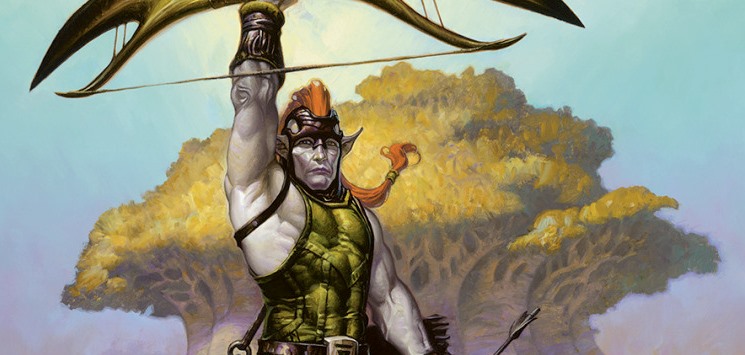Are you a Quiet Speculation member?
If not, now is a perfect time to join up! Our powerful tools, breaking-news analysis, and exclusive Discord channel will make sure you stay up to date and ahead of the curve.
It would be hard to pick a "best" moment at GP Charlotte. With all the awesome feature matches (big props to Starcitygames for the coverage), interesting deck techs, online buzz, and general community involvement in the event, it really felt like an interactive experience even for those stuck at their desks. Although Charlotte was not Magic's biggest Grand Prix, an honor that goes to Richmond 2014, it was definitely one of its most influential. Coming off a long offseason and a high-impact ban announcement, it was unclear how the format would look. Charlotte gave the format direction, and it's up to us to figure out how things will look after the event.
My article yesterday talked about the metagame-wide conditions surrounding Charlotte, drilling more into the quantitative side of the event and avoiding the higher-level takeaways. Today, I want to go back to those top-level conclusions and focus on four lessons we can learn from the event. GP Charlotte gave us a lot of information to digest, but these lessons in particular will affect your Modern experience going into the rest of the year.
[wp_ad_camp_1]
Lesson #1: Collected Company is Real
 Before the GP, both pros and regular players shared skepticism about Collected Company's viability in major events. There was no doubt Company itself was powerful. The issue was just figuring out its shell. Options included Naya Zoo, a "Podless" Melira Pod deck, Elves, Bant Midrange, and a variety of other homes. This uncertainty led many to believe that the card itself might not be that strong: Tasigur, the Golden Fang in Fate Reforged and Atarka's Command in Dragons of Tarkir had found their homes almost overnight, which suggested Company might just be overhyped. But there were many players who weren't so sure. As early as April, Abzan Company and Elves were enjoying considerable success on both MTGO and in paper. Both were solid tier 2 decks during the month of May, and this looked to be true going into June. That said, SCG Columbus challenged our assumptions about the deck, where Company cards underperformed at both the Invitational and the Open. Based on this, Company's future was unclear going into GP Charlotte.
Before the GP, both pros and regular players shared skepticism about Collected Company's viability in major events. There was no doubt Company itself was powerful. The issue was just figuring out its shell. Options included Naya Zoo, a "Podless" Melira Pod deck, Elves, Bant Midrange, and a variety of other homes. This uncertainty led many to believe that the card itself might not be that strong: Tasigur, the Golden Fang in Fate Reforged and Atarka's Command in Dragons of Tarkir had found their homes almost overnight, which suggested Company might just be overhyped. But there were many players who weren't so sure. As early as April, Abzan Company and Elves were enjoying considerable success on both MTGO and in paper. Both were solid tier 2 decks during the month of May, and this looked to be true going into June. That said, SCG Columbus challenged our assumptions about the deck, where Company cards underperformed at both the Invitational and the Open. Based on this, Company's future was unclear going into GP Charlotte.
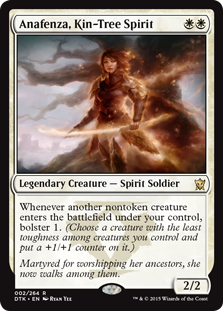 The weekend is over and the results are in: Company is now looking like the real deal. As I discussed in my metagame article yesterday, Abzan Company is one of the only decks in the format to enjoy consistent metagame increases in all periods of time since April, which is exactly the trend you want to see in an up-and-coming deck. One reason people undervalued this card was their focus on where it might find a home. And honestly, I don't think this question has been resolved: we see three different Company decks in just the Top GP decks, and all their copies made up 25% of that Top 32. But that's not the important takeaway here. The conclusion isn't that a certain Company deck is better than another. Rather, it's that Company as a card has now proven itself as a Modern staple. I've heard it described as the green Dig Through Time, and although that's a misleading characterization (often stated by people who are spouting banlist nonsense), it does get at the underlying power of a card many people lost some faith in.
The weekend is over and the results are in: Company is now looking like the real deal. As I discussed in my metagame article yesterday, Abzan Company is one of the only decks in the format to enjoy consistent metagame increases in all periods of time since April, which is exactly the trend you want to see in an up-and-coming deck. One reason people undervalued this card was their focus on where it might find a home. And honestly, I don't think this question has been resolved: we see three different Company decks in just the Top GP decks, and all their copies made up 25% of that Top 32. But that's not the important takeaway here. The conclusion isn't that a certain Company deck is better than another. Rather, it's that Company as a card has now proven itself as a Modern staple. I've heard it described as the green Dig Through Time, and although that's a misleading characterization (often stated by people who are spouting banlist nonsense), it does get at the underlying power of a card many people lost some faith in.
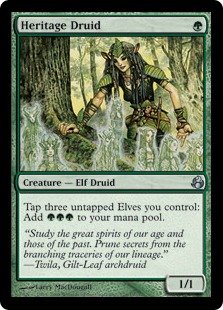 This is an important distinction for deckbuilders and players. For deckbuilders using Company, it means the Modern world is your oyster. Want to build Company Humans? Go right ahead! Try out Zombie Company? Shamble away! Bounce between Elves, Abzan Company, and Naya Company? Any of those are probably fine! In all these cases, the decks are strong enough to be carried on the card itself, so you don't need to worry too much about what Company deck you are playing. In many respects, it becomes a green Snapcaster Mage more than a Dig. The card alone gives multiple decks legs, not just one or two. You will also need to respect Company as a player. As you go to tournaments this summer, don't expect just Elves or just Abzan Company. Instead, you'll need to expect the "Company decks" as a more general foe. This means you can't just hedge your bets on Grafdigger's Cage, because neither the Zoo nor Elves variants care about this card. Instead, you will need to focus on cards that are good against all the Company decks (e.g. Anger of the Gods, which is looking more and more maindeckable with each weekend). Just as we have come to expect Snapcaster as a blue staple or Bolt as a red one, so too will we need to start accepting Company as a green one. Yes, there will be green decks that won't play this card because its deckbuilding restrictions are so strict. But it will see enough play at any given time that you need to be ready for at least 10%-15% of an event to be on some kind of Company deck.
This is an important distinction for deckbuilders and players. For deckbuilders using Company, it means the Modern world is your oyster. Want to build Company Humans? Go right ahead! Try out Zombie Company? Shamble away! Bounce between Elves, Abzan Company, and Naya Company? Any of those are probably fine! In all these cases, the decks are strong enough to be carried on the card itself, so you don't need to worry too much about what Company deck you are playing. In many respects, it becomes a green Snapcaster Mage more than a Dig. The card alone gives multiple decks legs, not just one or two. You will also need to respect Company as a player. As you go to tournaments this summer, don't expect just Elves or just Abzan Company. Instead, you'll need to expect the "Company decks" as a more general foe. This means you can't just hedge your bets on Grafdigger's Cage, because neither the Zoo nor Elves variants care about this card. Instead, you will need to focus on cards that are good against all the Company decks (e.g. Anger of the Gods, which is looking more and more maindeckable with each weekend). Just as we have come to expect Snapcaster as a blue staple or Bolt as a red one, so too will we need to start accepting Company as a green one. Yes, there will be green decks that won't play this card because its deckbuilding restrictions are so strict. But it will see enough play at any given time that you need to be ready for at least 10%-15% of an event to be on some kind of Company deck.
As a final thought on this, if someone forced me to play a Company deck tomorrow, here's the list I would play. It's essentially Bradley Robinson's 16th place Charlotte list with some changes. Note the Decays (you need this in a diverse format with weird cards), the bullet Voice of Resurgence (there's a lot of control), the two maindeck Oozes (it's that good), and the sideboard with both singleton bullets (Magus is super sexy) and redundant answers to problem decks.
Abzan Company Revisited, by Sheridan Lardner
Lesson #2: The Format can Self-Police
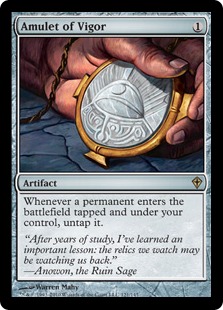 I'll admit: I was worried about Amulet Bloom going into the GP. It had everything going for it including experienced pilots, a commanding matchup win percentage on MTGO, tons of high profile finishes, the highest win percentage at the Pro Tour, and volumes of Amulet-hating anecdotes from across the Modern community. It was so bad that SCG, in one of its less-fine hours, asked every single person who walked in front of the camera what they thought about Amulet Bloom in the format (read: "what should Wizards ban from it?"). Some of this ban discussion was nothing but hype, but a lot of it was also pure statistics and data analysis. It really did have a lot of scary datapoints going into GP Charlotte, and the hope was that something would change at the GP to tame the deck before R&D tamed it with a banlist update.
I'll admit: I was worried about Amulet Bloom going into the GP. It had everything going for it including experienced pilots, a commanding matchup win percentage on MTGO, tons of high profile finishes, the highest win percentage at the Pro Tour, and volumes of Amulet-hating anecdotes from across the Modern community. It was so bad that SCG, in one of its less-fine hours, asked every single person who walked in front of the camera what they thought about Amulet Bloom in the format (read: "what should Wizards ban from it?"). Some of this ban discussion was nothing but hype, but a lot of it was also pure statistics and data analysis. It really did have a lot of scary datapoints going into GP Charlotte, and the hope was that something would change at the GP to tame the deck before R&D tamed it with a banlist update.
Of course, when the dust settled and Elves was on top, Amulet Bloom was basically nowhere to be seen. It didn't send many players to day 2, didn't send many of those day 2 qualifiers to the Top 32, and was overall not the tournament monster everyone feared. Were there some conditions at play that toned down Amulet, or was the format's "best" deck just going through an offday?
 Looking at Amulet, I see two factors at play that bode well for Modern . Both relate to the concepts of self-policing and self-regulation, and both were on display at Charlotte. The most obvious was preparation. Anyone who read the section header above and didn't think this section would contain a picture of Blood Moon doesn't know me very well. Formats, especially nonrotating ones, are defined by their police cards. Before Charlotte, we had no idea if Modern's police cards would be enough to stop Amulet. Sure, Moon was good, but only if you drew it and only if you were in colors that could support it. Would other cards and decks be able to corral the Amulet "menace"? The answer after Charlotte was a resounding "yes". Between Moon, countermagic, maindecked land destruction paired with pressure (e.g. Fulminator Mage), and a variety of other tools, Modern responded to Amulet Bloom and regulated itself. This speaks to the quality of police cards in the format and suggests Modern can do it again if needed. But there's also a danger here. As many pros have argued, Modern can be a format of 80-20 matchups heavily determined by sideboard bullets and luck. Although this is a gross overstatement of the statistical reality, it has a kernel of truth: matchups really can be defined by some narrow cards, and that can be challenging when picking a deck. It remains to be seen if Modern's police cards are too narrow to stick around or if they can become mainstream enough to always police decks like Amulet Bloom. Thankfully, with more GPs on the horizon, we'll know this soon enough.
Looking at Amulet, I see two factors at play that bode well for Modern . Both relate to the concepts of self-policing and self-regulation, and both were on display at Charlotte. The most obvious was preparation. Anyone who read the section header above and didn't think this section would contain a picture of Blood Moon doesn't know me very well. Formats, especially nonrotating ones, are defined by their police cards. Before Charlotte, we had no idea if Modern's police cards would be enough to stop Amulet. Sure, Moon was good, but only if you drew it and only if you were in colors that could support it. Would other cards and decks be able to corral the Amulet "menace"? The answer after Charlotte was a resounding "yes". Between Moon, countermagic, maindecked land destruction paired with pressure (e.g. Fulminator Mage), and a variety of other tools, Modern responded to Amulet Bloom and regulated itself. This speaks to the quality of police cards in the format and suggests Modern can do it again if needed. But there's also a danger here. As many pros have argued, Modern can be a format of 80-20 matchups heavily determined by sideboard bullets and luck. Although this is a gross overstatement of the statistical reality, it has a kernel of truth: matchups really can be defined by some narrow cards, and that can be challenging when picking a deck. It remains to be seen if Modern's police cards are too narrow to stick around or if they can become mainstream enough to always police decks like Amulet Bloom. Thankfully, with more GPs on the horizon, we'll know this soon enough.
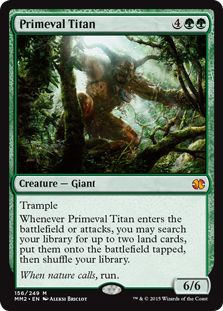 The second factor in regulating Amulet was player knowledge and experience. Every time I analyzed Amulet results, I knew there was some chance these numbers were being artificially inflated by inexperienced opponents who didn't know how to beat the deck. This was painfully obvious in feature matchups, where the wrong lands were destroyed with the wrong sequencing, or the wrong cards were countered/discarded. I made this a sticking point in my GP Charlotte predictions article, although it was unclear to what extent inexperience was playing a part in the deck's ascension. With the GP in the books, it's still not quite decided, but it's certainly more decided than before the event: players are better at understanding the deck and, by extension, beating the deck. Maybe they didn't master the matchup but they at least knew what was going on. This gave them a much better chance at both preparing for the deck beforehand (selecting cards like Moon) and beating it if they faced it. All of this is to say that knowledge is as much a self-regulatory tool as are the cards themselves. If you don't know how to beat a deck, it doesn't matter what cards you bring in against it.
The second factor in regulating Amulet was player knowledge and experience. Every time I analyzed Amulet results, I knew there was some chance these numbers were being artificially inflated by inexperienced opponents who didn't know how to beat the deck. This was painfully obvious in feature matchups, where the wrong lands were destroyed with the wrong sequencing, or the wrong cards were countered/discarded. I made this a sticking point in my GP Charlotte predictions article, although it was unclear to what extent inexperience was playing a part in the deck's ascension. With the GP in the books, it's still not quite decided, but it's certainly more decided than before the event: players are better at understanding the deck and, by extension, beating the deck. Maybe they didn't master the matchup but they at least knew what was going on. This gave them a much better chance at both preparing for the deck beforehand (selecting cards like Moon) and beating it if they faced it. All of this is to say that knowledge is as much a self-regulatory tool as are the cards themselves. If you don't know how to beat a deck, it doesn't matter what cards you bring in against it.
Overall, GP Charlotte showed us the format has two self-regulatory tools we can lean on in the future. Players can both learn scary matchups and then bring cards for those matchups. It is still possible that Amulet Bloom is a broken deck that will eventually evolve beyond player knowledge/preparedness. We will know more about this after the next two GPs. But tentatively, this deck looks a lot safer now than it did before. So if you wanted Bloom gone then too bad: it's probably here to stay (other GPs depending). But if you wanted to buy into the deck but were worried, Charlotte is a convincing datapoint as to its security.
Lesson #3: Know How to Interpret Hype
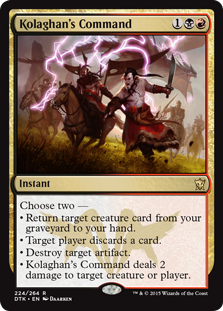 It's no coincidence that I keep using this "hype" term in my recent articles. Modern, as a format, generates a lot of it. We see this in decks, strategies, tournaments, and, of course, card prices (RIP Snapcaster Mage). From a metagame perspective, this was one of the most hype-driven offseasons in recent memory. Between Amulet Bloom, Jund, Grixis, Burn, and all the Tarkir cards at the core of those decks, everyone (Nexus included!) had an opinion to share on these decks. I think I've tagged more Kolaghan's Command cards in the last few weeks than there were copies in the Top 32. But a huge challenge in this was interpreting the hype and converting it to actionable intelligence. Should you play these hyped decks? Should you learn to beat them? To what extent should they inform your deckbuilding?
It's no coincidence that I keep using this "hype" term in my recent articles. Modern, as a format, generates a lot of it. We see this in decks, strategies, tournaments, and, of course, card prices (RIP Snapcaster Mage). From a metagame perspective, this was one of the most hype-driven offseasons in recent memory. Between Amulet Bloom, Jund, Grixis, Burn, and all the Tarkir cards at the core of those decks, everyone (Nexus included!) had an opinion to share on these decks. I think I've tagged more Kolaghan's Command cards in the last few weeks than there were copies in the Top 32. But a huge challenge in this was interpreting the hype and converting it to actionable intelligence. Should you play these hyped decks? Should you learn to beat them? To what extent should they inform your deckbuilding?
Most players look at hyped decks and either accept them blindly or reject them outright. They might put in some testing or discussion behind these decisions, but they are so influenced by the hype factor that it impairs their judgment. They either buy too easily into hype or, perhaps worse, are categorically allergic to it. Most readers don't need convincing about why it's bad to jump on a hype train. But, maybe more surprisingly, it's probably just as bad to reject hyped decks too unconditionally.
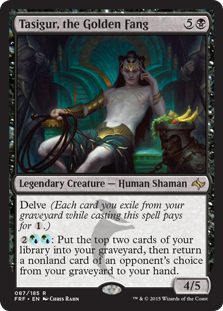 Let's take Grixis Twin as an example. Going into the GP, there was a lot of hype surrounding this deck, with many players believing it was both the strongest Grixis and the strongest Twin variant. For those who piled on the Grixis Twin hype train, I'm sorry: you were on a deck with one of the most disappointing finishes at the GP. This datapoint seems like it vindicates the players who didn't buy in to the hype and stayed away. Not so fast! If you were one of the players who thought the deck was oversold, you might have played something else, but you were also probably unrepared for the 12% of the field who made day 2 with the deck. It's true that many of those players failed to make Top 32, and it's true their deck was overhyped. But if you ran into those players and weren't ready for Grixis Twin, you probably lost and probably didn't make it either. We would see a similar effect with Jund. If you dismissed the Jund hype too quickly, you wouldn't have been ready for the 10% of the day 2 metagame that very much believed in Jund's power.
Let's take Grixis Twin as an example. Going into the GP, there was a lot of hype surrounding this deck, with many players believing it was both the strongest Grixis and the strongest Twin variant. For those who piled on the Grixis Twin hype train, I'm sorry: you were on a deck with one of the most disappointing finishes at the GP. This datapoint seems like it vindicates the players who didn't buy in to the hype and stayed away. Not so fast! If you were one of the players who thought the deck was oversold, you might have played something else, but you were also probably unrepared for the 12% of the field who made day 2 with the deck. It's true that many of those players failed to make Top 32, and it's true their deck was overhyped. But if you ran into those players and weren't ready for Grixis Twin, you probably lost and probably didn't make it either. We would see a similar effect with Jund. If you dismissed the Jund hype too quickly, you wouldn't have been ready for the 10% of the day 2 metagame that very much believed in Jund's power.
When going into a hype-filled metagame, it's not enough to be the enlightened soul who has seen through the popular opinion. You also need to understand that many players won't reject the hype and will be on hyped decks and cards. So although you personally might not play that deck, other people definitely will. Prepare accordingly. That said, sometimes you also need to be aware that hype can be well-placed: see Collected Company as an example of this. You can't always see hype and run away. You need to remain open. This kind of critical thinking will serve you well as you go into the Modern events of the summer.
Lesson #4: Never Underestimate Weird Decks
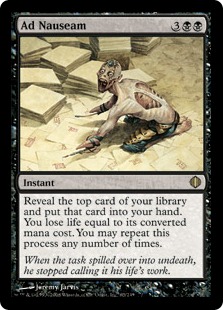 Because I moderate a major Modern forum, I'm rarely surprised when I see a new deck. Chances are that someone has brainstormed it on the boards before, and the GP Charlotte oddballs were no exception. Even the strangest of the lot, the Fateseal/Lantern of Insight Control/Top Control deck piloted by Zac Elsik, is one of our oldest and most-trafficked developing deck threads. But it wasn't the decks that were surprising. It was that decks like Ad Nauseam, Lantern Control, and Griselbrand Shoal actually finished in the Top 16 of a Grand Prix. You know you are dealing with an open format when you list three rogue decks and Ad Nauseam is the most mainstream of the group.
Because I moderate a major Modern forum, I'm rarely surprised when I see a new deck. Chances are that someone has brainstormed it on the boards before, and the GP Charlotte oddballs were no exception. Even the strangest of the lot, the Fateseal/Lantern of Insight Control/Top Control deck piloted by Zac Elsik, is one of our oldest and most-trafficked developing deck threads. But it wasn't the decks that were surprising. It was that decks like Ad Nauseam, Lantern Control, and Griselbrand Shoal actually finished in the Top 16 of a Grand Prix. You know you are dealing with an open format when you list three rogue decks and Ad Nauseam is the most mainstream of the group.
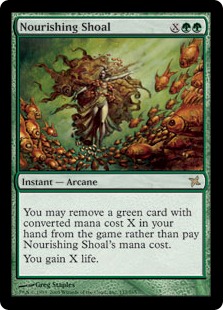 In my pre-GP Charlotte article, I warned players to expect weird decks. This warning was totally spot-on (seriously: Ghoulcller's Bell has no business being in the Top 16 of a multi-thousand player GP). but I also want to take it one step further. Don't just expect weird decks. Rely on them. Play them. Practice them and make them yours, because these rogue and weird decks can be extremely rewarding even at the highest levels of play. In part, this returns to the argument about Modern being a format that's polarized around narrow hate and answers. If everyone else is preparing for Jund, Grixis, Burn, Affinity, Amulet, and all the usual top-tier suspects, there's a lot of room for Nourishing Shoal to sneak through. It also gets at the importance of knowing matchups and being familiar with the varied playlines of your deck. Jumping around tier 1 and tier 2 decks might put you on an established Modern staple, but that won't matter if you don't know the deck you are piloting and don't know its matchups.
In my pre-GP Charlotte article, I warned players to expect weird decks. This warning was totally spot-on (seriously: Ghoulcller's Bell has no business being in the Top 16 of a multi-thousand player GP). but I also want to take it one step further. Don't just expect weird decks. Rely on them. Play them. Practice them and make them yours, because these rogue and weird decks can be extremely rewarding even at the highest levels of play. In part, this returns to the argument about Modern being a format that's polarized around narrow hate and answers. If everyone else is preparing for Jund, Grixis, Burn, Affinity, Amulet, and all the usual top-tier suspects, there's a lot of room for Nourishing Shoal to sneak through. It also gets at the importance of knowing matchups and being familiar with the varied playlines of your deck. Jumping around tier 1 and tier 2 decks might put you on an established Modern staple, but that won't matter if you don't know the deck you are piloting and don't know its matchups.
To be clear, this doesn't mean all rogue decks are viable just because they are underplayed. Sometimes underplayed decks are just plain bad, or at least worse than another option. But if you have an unexpected deck with some baseline power, by all means run it at your events and don't let tiers or metagame breakdowns tell you otherwise. Just be sure you aren't picking a rogue deck just for the sake of it being new and different. Make sure it's a legitimate contender (i.e. test, test, test). And by a similar token, expect other players to follow this strategy and prepare for the weirdos accordingly.
Life After GP Charlotte
It's tempting to overstate the importance of a single GP. Like all major tournaments, Charlotte existed in the broader Modern context leading up to the event. There are also two more major GPs coming up in the next month: it's easy as an American player to forget about our Modern brothers and sisters overseas. Despite these complicating factors, it's still important to focus on GP Charlotte and look for the big takeaways from this event. These four lessons are the big ones I will internalize with GP over and done, and I hope they are helpful as you go into the rest of the Modern season. We are in a whole new Modern world after Charlotte with new decks, new cards, and a new metagame: it's a great time to play Modern and I look forward to seeing all your tournament finishes in the future.


